Pulque: Ancient Drink Of The Gods Is Popular Again But It Has Odd Side-Effects
A. Sutherland - AncientPages.com - Pulque is Mexico's oldest alcoholic beverage. Known as the "Drink of the Gods, it was drunk by the Maya, Aztecs, Huastecs, and other cultures in ancient Mesoamerica.
Pulque vessel in the shape of a monkey, Aztec, 1200–1520, onyx, Dumbarton Oaks Museum , Washington, DC - Image credit: TomR - CC BY-SA 3.0
The ancient drink has been re-introduced to our modern society, and its popularity is increasing, but if you want to taste it, be warned, this is no ordinary beer. It has some quite odd side effects.
Pulque is made from fermented juice or sap of the maguey plant (Agave americana) and is only slightly alcoholic. Those who tried it say one can sit and drink Pulque for hours without getting drunk, but later, something odd happens. When you get up to leave, realize your legs don't work right. Your mind is clear, but your body doesn't work.
Pulque In Myths And Legends
Pulque is mentioned in several myths and legends in Mesoamerica. Being the ancient ancestor of mescal and tequila, Pulque predates the arrival of the Spanish by at least 1,500 years, and the drink has long been considered sacred.
Ancient myths and legends tell that Pulque was given to humans by the great god Quetzalcoatl, who noticed that people seemed miserable instead of singing and dancing. So, he decided to give them something to brighten their days, and this was the beginning of how Pulque entered the lives of people in Mesoamerica.
Mayahuel, the Aztec goddess of the maguey, is often depicted as a beautiful young woman associated with fertility and sometimes referred to as 'the woman of 400 breasts', no doubt about the milk-like sap of the plant.
She was also the goddess of pulque, an alcoholic beverage made from agave juices.
Depiction of the goddess Mayahuel.
In ancient times, Pulque was not a drink for poor people but reserved for the highest social classes. Later, it became the drink of poor farmers.
Ancient people drinking Pulque are depicted on several relics and monuments. The Zapotec civilization (500-900 CE) had monuments showing scenes from wedding ceremonies where guests drank Pulque.
The earliest depictions in Mesoamerican art of Pulque are from the great city of Teotihuacan, at its peak between 300 and 550 CE. Stone relief carvings show masked figures with milky drops falling from their mouths, and one mask has a background of maguey leaves.
Pulque Used As Medicine
In more modern times, for some Indians of the central highlands, Pulque was once at the center of their religion and the cure for just about everything – from diabetes and intestinal problems to sleep disorders.
Agave plant in Oaxaca state. Credit: Adobe Stock - Thanh
The drink is said to contain plenty of probiotics, protein, various vitamins, and minerals. In its long and strange life, it's been used as an aphrodisiac, a fuel for celebrations, and to ease the pain of sacrificial victims in ancient times.
Antonio Gomez, a pulque producer in the community of Santiago Cuautlalpan in Tepotzotlan municipality just north of Mexico City, produces the drink the old-fashioned way by hollowing out the pulpy heart of the region's maguey plant and using a sort of suction pipe to pull out the sugary liquid that collects in the hollow section. The beverage at that stage, known as "aguamiel," is barely alcoholic, if at all.
Gomez says that Pulque was once served in some parts of Mexico in the morning and for health reasons.
"The old people, they say that before, they didn't drink coffee; they had some pulque, tortillas, and beans, and that was their breakfast," he said.
"A lot of doctors are prescribing it as medicine," Gomez said. "A diabetic person, for example, should drink strong pulque."
Because it's so vitamin- and mineral-rich, it was once consumed in arid parts of Mexico when water was scarce, and some pregnant women and new mothers still drink it to promote health and lactation.
Today, Pulque is considered a nutrient-rich drink and has come among a new generation of Mexicans. It is said that old habits die hard, which is undoubtedly true for Pulque, who has survived for 2,000 years.
Written by – A. Sutherland - AncientPages.com Senior Staff Writer
Updated on January 17, 2024
Copyright © AncientPages.com All rights reserved. This material may not be published, broadcast, rewritten or redistributed in whole or part without the express written permission of AncientPages.com
More From Ancient Pages
-
 Discovered: Mysterious 2,400-Year-Old Ancient Egyptian Shrine Belonging To 30th Dynasty Pharaoh Nectanebo I
Archaeology | Oct 6, 2015
Discovered: Mysterious 2,400-Year-Old Ancient Egyptian Shrine Belonging To 30th Dynasty Pharaoh Nectanebo I
Archaeology | Oct 6, 2015 -
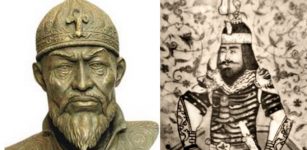 Timur: Brutal Military Leader And His Desire To Conquer But Not To Rule
Featured Stories | Mar 13, 2019
Timur: Brutal Military Leader And His Desire To Conquer But Not To Rule
Featured Stories | Mar 13, 2019 -
 King Henry VIII’s Walking Staff And Other Unusual Weapons
Artifacts | Nov 1, 2017
King Henry VIII’s Walking Staff And Other Unusual Weapons
Artifacts | Nov 1, 2017 -
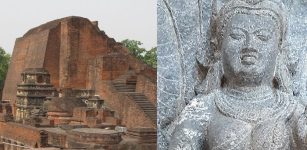 Unique 1,300-Year-Old Pala Period Idol Of Snake Goddess, Nag Devi Discovered Near Nalanda University, India
Archaeology | Apr 5, 2022
Unique 1,300-Year-Old Pala Period Idol Of Snake Goddess, Nag Devi Discovered Near Nalanda University, India
Archaeology | Apr 5, 2022 -
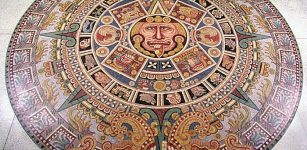 Aztecs’ Five Suns Creation Myth And Prophecy
Aztec Mythology | Jul 18, 2018
Aztecs’ Five Suns Creation Myth And Prophecy
Aztec Mythology | Jul 18, 2018 -
 ‘Umeda Graves’ Dated To Edo Period Discovered At Osaka, Japan
Archaeology | Aug 21, 2020
‘Umeda Graves’ Dated To Edo Period Discovered At Osaka, Japan
Archaeology | Aug 21, 2020 -
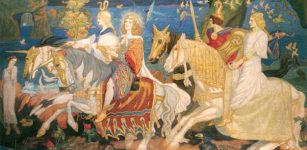 Tuatha De Danann: Mythical Race Of God-Like Beings With Supernatural Abilities In Celtic Mythology
Celtic Mythology | Feb 26, 2019
Tuatha De Danann: Mythical Race Of God-Like Beings With Supernatural Abilities In Celtic Mythology
Celtic Mythology | Feb 26, 2019 -
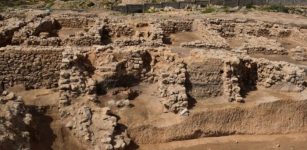 Ancient Greco-Roman Amphora Workshop Discovered In Alexandria, Egypt
Archaeology | Apr 17, 2022
Ancient Greco-Roman Amphora Workshop Discovered In Alexandria, Egypt
Archaeology | Apr 17, 2022 -
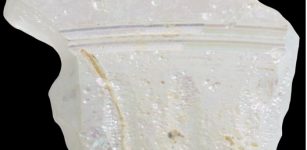 New Method Distinguishes Between Egyptian And Palestinian Glass During Roman Times
Archaeology | Jul 13, 2020
New Method Distinguishes Between Egyptian And Palestinian Glass During Roman Times
Archaeology | Jul 13, 2020 -
 Mythical Fiery Bird Phoenix In Mythologies Of Many Ancient Cultures
Featured Stories | Mar 23, 2017
Mythical Fiery Bird Phoenix In Mythologies Of Many Ancient Cultures
Featured Stories | Mar 23, 2017 -
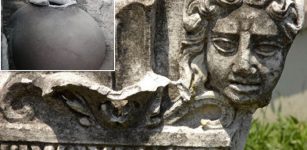 Huge Phitos (Jar) Unearthed In Ancient City Of Prusias ad Hypium, Turkey
Archaeology | Jun 26, 2022
Huge Phitos (Jar) Unearthed In Ancient City Of Prusias ad Hypium, Turkey
Archaeology | Jun 26, 2022 -
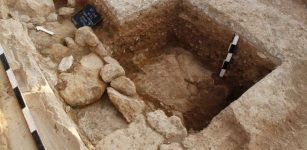 Oldest Houses Of Nea Paphos In Cyprus – Discovered
Archaeology | Apr 12, 2017
Oldest Houses Of Nea Paphos In Cyprus – Discovered
Archaeology | Apr 12, 2017 -
 Roman Forum (‘Forum Romanum’) – The Heart Of Ancient Rome
Featured Stories | Aug 5, 2019
Roman Forum (‘Forum Romanum’) – The Heart Of Ancient Rome
Featured Stories | Aug 5, 2019 -
 Secrets Of Mysterious Bronze Age Hoard Found In Rosemarkie, Scotland Revealed
Archaeology | Jul 31, 2024
Secrets Of Mysterious Bronze Age Hoard Found In Rosemarkie, Scotland Revealed
Archaeology | Jul 31, 2024 -
 Leonardo Da Vinci Has 14 Living Male Descendants – DNA Study Reveals
Archaeology | Jul 7, 2021
Leonardo Da Vinci Has 14 Living Male Descendants – DNA Study Reveals
Archaeology | Jul 7, 2021 -
 Unexpected And Surprising Results Of Ancient DNA Study – Who Were The First People In South America?
Archaeology | Nov 2, 2022
Unexpected And Surprising Results Of Ancient DNA Study – Who Were The First People In South America?
Archaeology | Nov 2, 2022 -
 Discoveries In The Hanged Man Cave, Kostkowice, Poland
News | Sep 16, 2015
Discoveries In The Hanged Man Cave, Kostkowice, Poland
News | Sep 16, 2015 -
 ‘Bad King John’ Of England: His Lost Treasures Have Never Been Found
Featured Stories | Apr 6, 2016
‘Bad King John’ Of England: His Lost Treasures Have Never Been Found
Featured Stories | Apr 6, 2016 -
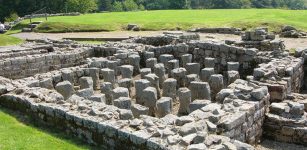 Vindolanda Wooden Tablets: Ancient Military And Private Correspondence Left By Departing Roman Troops
Civilizations | Apr 17, 2016
Vindolanda Wooden Tablets: Ancient Military And Private Correspondence Left By Departing Roman Troops
Civilizations | Apr 17, 2016 -
 Was Tintagel Castle A Fortress Used By Iconic Hero King Arthur?
Featured Stories | Jul 12, 2022
Was Tintagel Castle A Fortress Used By Iconic Hero King Arthur?
Featured Stories | Jul 12, 2022



